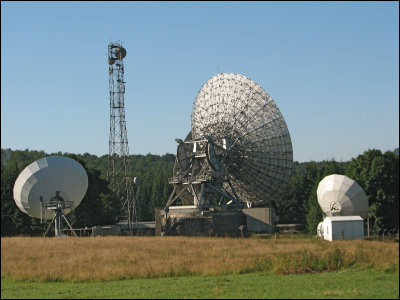Researchers are looking at cell phone base stations that are lightning strikes more than 100 times a year

by
The summit of Mount Zentis , known as the famous peak of Eastern Switzerland, is a mobile phone base station with a height of 124 meters at a height of about 2500 meters. This mobile phone base station, called the Zentis Tower, has been struck by lightning more than 100 times a year, and it is said to be the 'most lightning striked structure in the world'. It is said that lightning researchers are paying attention to such Zentis Tower.
This Cell Tower in the Swiss Alps by Struck by Lightning More Than 100 Times a Year-IEEE Spectrum
https://spectrum.ieee.org/tech-talk/energy/environment/an-oftstruck-mountaintop-tower-gets-a-new-lightning-sensor
On July 10, 2019, a research team at the Swiss Federal Institute of Technology installed a special observation instrument approximately 2 km from the Zentis Tower. A research team working on lightning mechanisms has asked Mark Stanley, who works at the New Mexico Institute of Technology, to develop a broadband interferometer to observe lightning falling on the Zentis Tower. Bill Ryson, who teaches electrical engineering at the New Mexico Institute of Technology and has collaborated with Mr. Stanley, has stated that professional observation of lightning requires the development of equipment by hand.
The broadband interferometer developed by Stanley has three antennas with a bandwidth of 20 to 80 MHz, and can record strong electromagnetic pulses emitted by lightning, and is generated along with lightning discharge. It also has a fourth antenna that observes low frequency signals called statics . Even lightning strikes, which are visible to the human eye for a moment, will become several GB of electromagnetic pulse data by using high-performance observation equipment developed by Stanley.

by
In the following movie, you can see the data from the broadband interferometer observing the lightning.
Replay of a Lightning Flash Near Florida's Kennedy Space Center-YouTube
When lightning occurs, a red light will light on the left side of the screen.
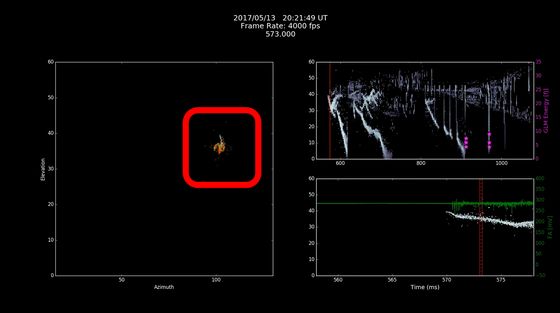
The red part shows where the lightning is spreading, and the white part shows the moving path of the lightning.
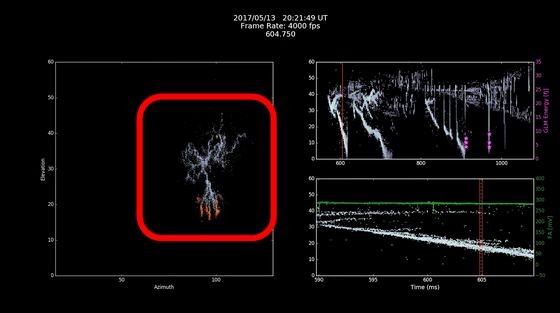
After the lightning reaches the bottom ...
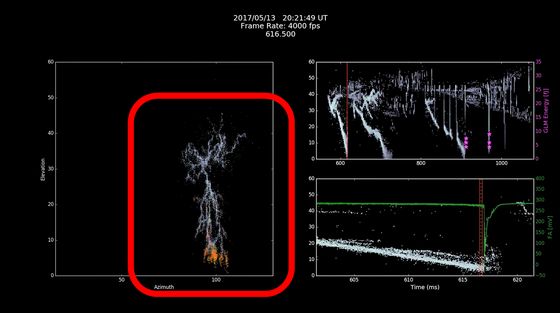
Furthermore, it can be seen that it produces complex light streaks as if plant roots spread, such as extending to the left.
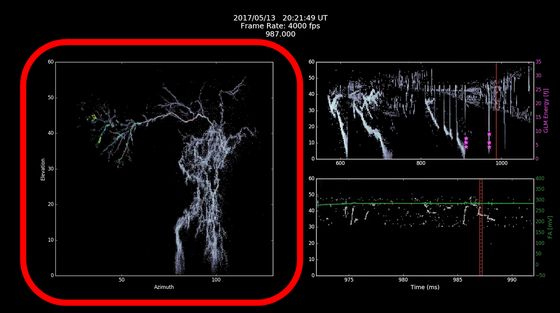
By mapping the movement of lightning in this way, the research team seems to want to understand the mechanism that causes the lightning more deeply. So far, electric fields of several megavolts per meter are required for thunderclouds to generate lightning, but the researchers actually sent balloons into thunderstorms, several megavolts per meter Rather, even an electric field less than a tenth of that was not observed. 'This is a big problem,' said Farhad Lachidi, a research team who set up the observation equipment at the Zentis Tower, that the conditions required for lightning strikes could not be confirmed by observing thunderclouds. did.
The research team also wants to use

Related Posts:

